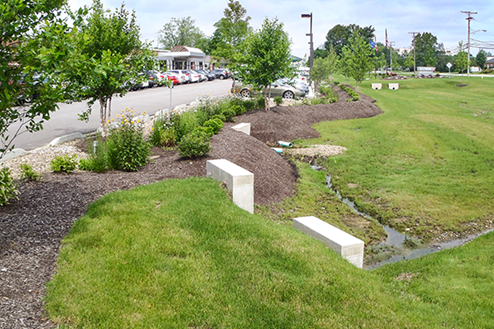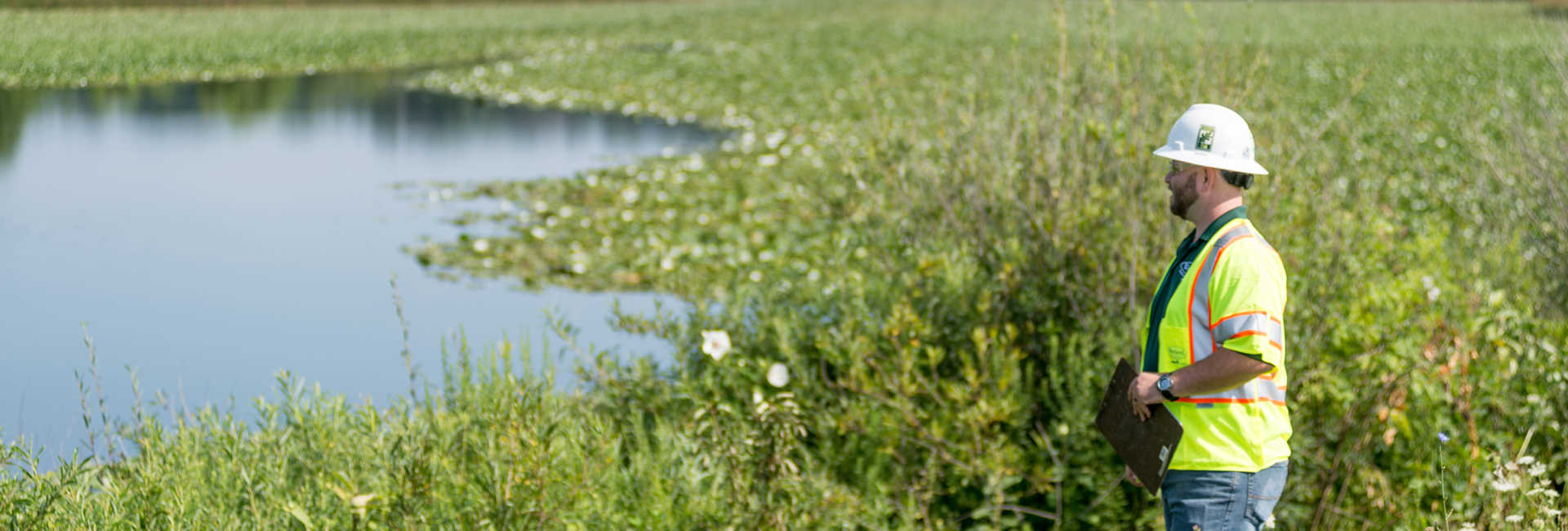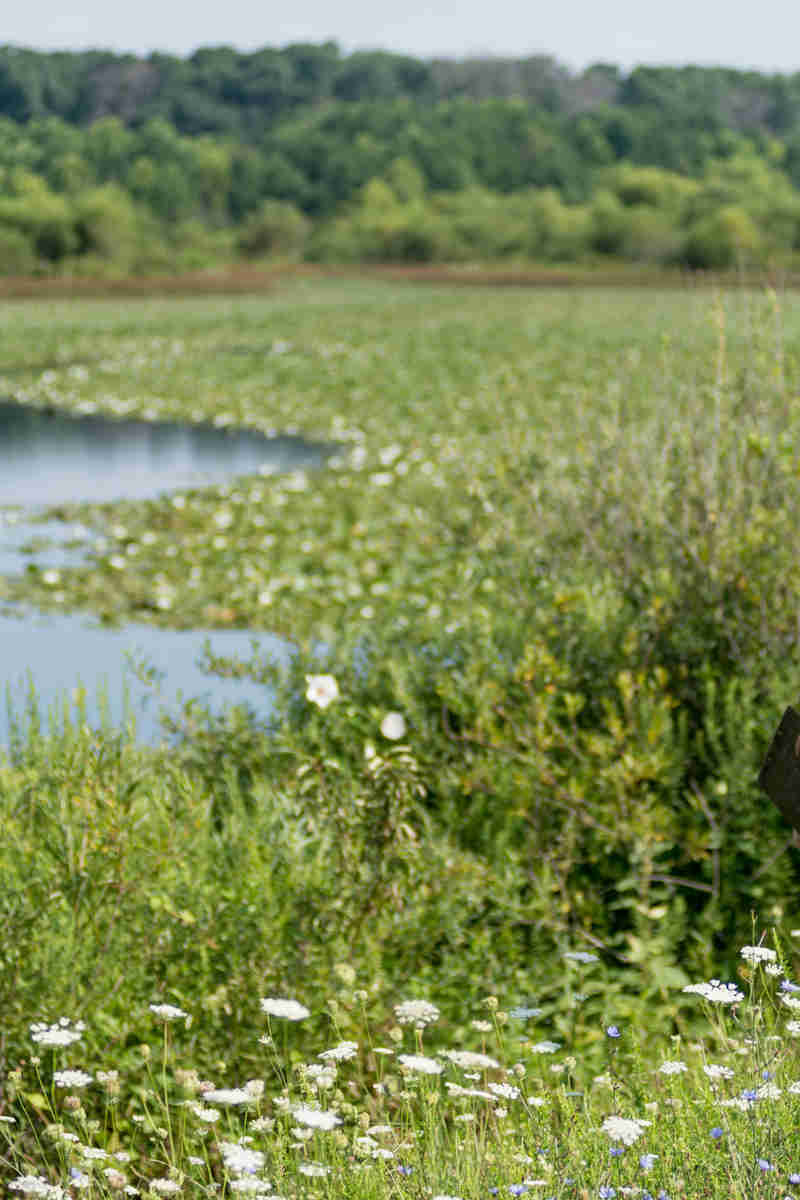When rainfall occurs, the water that hits impervious surfaces like buildings, roadways, parking lots, and other manmade infrastructure can transport pollutants, such as chemical fertilizers, pet and yard waste, motor oil, sewage overflow, and other debris into storm systems. When collected in dams, seawalls, pipes, or other infrastructure, stormwater runoff is gathered and put through dedicated storm pipes without being cleaned of pollutants first. This can cause fast-moving, contaminated water to be drained into nearby streams and wetlands and overwhelm sewer systems and water treatment plants.
Green infrastructure (GI) like infiltration basins, rain gardens, and bioswales use natural elements like rock and native plants to act as a filter for stormwater runoff, slowing down the flow of water while removing sediments and other pollutants before returning it to the sewer system, creating cleaner water that doesn’t overwhelm the sewer systems and water treatment plants or pollute nearby streams and wetlands while staying compliant with local regulations.
Like any heavily vegetated area, GI requires regularly scheduled maintenance to keep invasive plant species and critters at bay. Routine maintenance also helps GI function at its highest capacity to produce the best water quality possible.
Staying on Schedule
It’s easiest to keep track of routine maintenance by developing a maintenance plan. Maintenance plans are regularly-performed tasks – as much as every quarter, after large rainfall events, and even annually – that help green infrastructure stay in top shape. Routine maintenance plans are unique to every GI system’s needs, but can include the following:
- Inspections – Keeping an eye out for early signs of GI failure, regularly inspecting inlets for debris that could clog water flow, and cleaning out any sediment buildup helps stay ahead of any issues, such as overflow before they become a costly burden.
- Vegetation maintenance – Mowing the grass, checking the area for invasive species, installing erosion mitigation measures, and assessing plant health on a strict schedule creates a thriving green infrastructure system that works at peak performance at all times.
- Cleaning – Sweeping surrounding paved areas and checking the surrounding environment for any potentially harmful debris helps catch litter and extra sediment runoff from reaching the GI system.
Plan for It!
While routine maintenance plans can be implemented at any stage of the green infrastructure installation and upkeep process, creating a maintenance plan and designing green infrastructure based on its maintenance needs leads to the most functional system. While this sounds like an overwhelming task, having a team of experts on hand can help ease the process.




